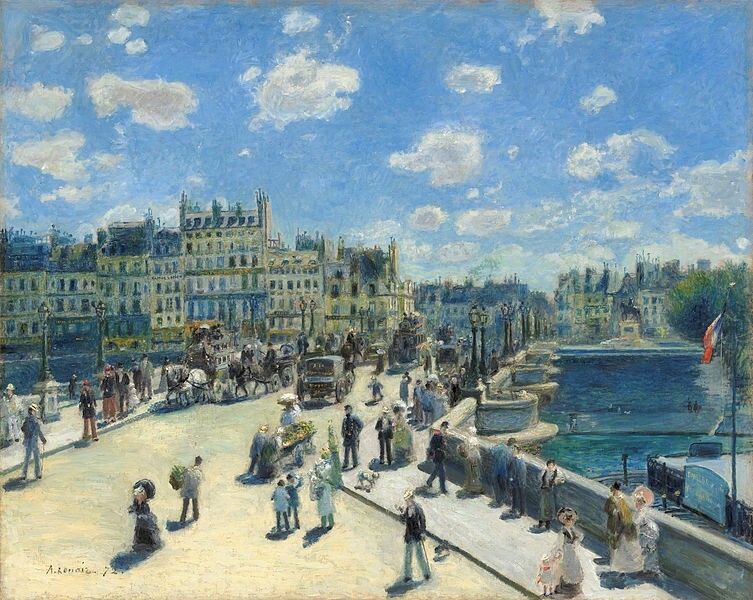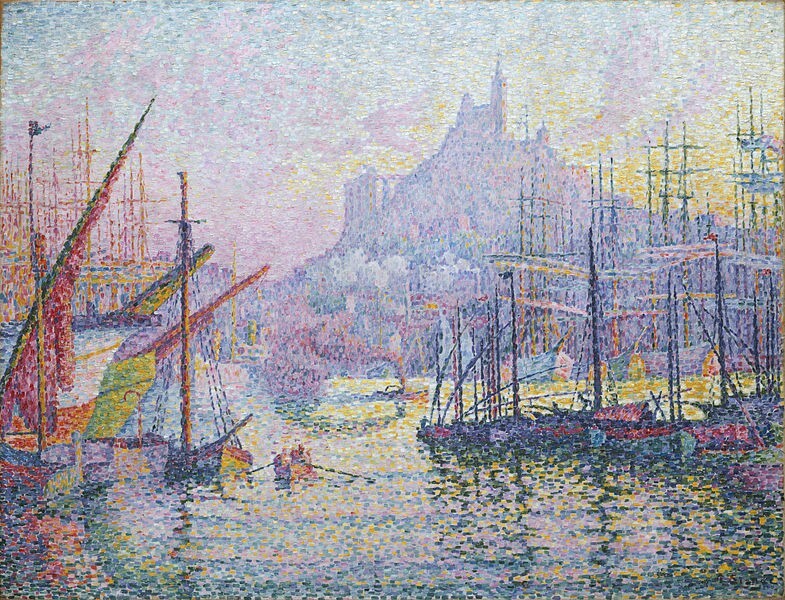Natural settings have always been a source of inspiration for many artists, particularly during the Impressionist period when plein-air painting became increasingly popular. Today, Artalistic presents an overview of the most famous landscape paintings that helped bring their creators notoriety.
Five famous artists and their most renowned landscape paintings
Impression Sunrise by Claude Monet, 1872

Impression Sunrise is a seminal work from the Impressionist movement and is presently on display at the Musée Marmottan in Paris. This artistic movement originated in France in the mid-19th century. During this movement, landscape artists attempted to accurately and objectively record the natural setting before them in terms of transient effects of light and color.
This major artistic movement was later named after this famous landscape painting by Claude Monet (1840-1926). It was painted in the early hours of November 1872 from the window of Hôtel l'Amirauté, located along the port of Le Havre. Monet successfully captured his fleeting emotions with his careful depiction of the light, the reflections on the water’s surface and the foggy hazy around the sun.
The blurred, seemingly unfinished aspect of this painting was revolutionary at the time and was a complete break from the classical canons. Its value fluctuated between 200 and 800 francs for years (around 5,000 to 30,000 euros today). The painting was not exhibited until 1946 when it became an instant symbol of this major artistic movement.
Monte Sainte-Victoire by Paul Cézanne, 1897: One of the most famous landscape paintings of all time

This famous landscape painting propelled Paul Cézanne (1839-1906) into the spotlight, bringing him well-deserved fame. It depicts the Mont Sainte-Victoire in Provence, France. This mountain became one of Cézanne’s most repeated and varied themes. He created approximately twenty different versions of this landscape throughout his life, including drawings and watercolors.
To this day, when one hears the name Cézanne, it’s an automatic reflex to think of Mont Sainte-Victoire. This piece is a prime example of his style which uses geometry and light to capture nature.
Pont-Neuf by Pierre-Auguste Renoir, 1872

Pierre-Auguste Renoir (1841-1919) is one of the many Impressionist painters who celebrated the city of Paris in his work. Renoir is considered to be a true master whose work remains unrivaled for its stunning colors and luminous qualities. The famous landscape painting Pont-Neuf immortalizes what life must have been like in this Parisian arrondissement in the 19th century.
At the time, Paris was an endless source of inspiration for artists, so much so that one has the impression that every minute detail of this city was captured by a painter during this movement. Examples include Gustave Caillebote's Paris Street, Rainy Day and Monet's La Gare Saint-Lazare, to name but a few!
Vue du port de Marseille by Paul Signac, 1905

Vue du port de Marseille is a famous landscape painting by the artist Paul Signac (1863-1935). This painting depicts the city and port of Marseille, which are delicately rendered using the pointillist technique. Signac is known to be one of the masters of this style of painting.
The vivid colors reflect the city’s energetic and lively ambiance while capturing urban life through a subtle blend of traditional impressionism and modern abstraction. Paul Signac’s emotion-filled yet precise brushstrokes have a strong impact on the viewer. Over the years, this famous French landscape artist's distinctive aesthetic style inspired countless contemporary artists.
The Monk by the Sea by Caspar David Friedrich, 1810

When looking at this famous landscape painting depicting the North Sea, one immediately asks oneself what time of day it is portraying - morning or evening? The Capuchin monk walking alone along the shore doesn’t help us find the answer. This aura of mystery has made this piece stand out in the history of art as a truly unique landscape. It should be noted that this piece was not painted from real life, but in the city of Dresden.
The famous landscape artist Caspar David Friedrich (1774-1840) was part of the German Romantic movement of the late 18th century. He made art that was inspired by philosophy and was heavily aimed at making the viewer bring certain ideas into question. Friedrich's artistic technique is minimalist in both line and color, pushing the subject into an abstract, enigmatic and otherworldly realm while allowing the viewer to meditate on the almost supernatural quality of the human soul. After all, shouldn’t the mind be free to wander and daydream, as perhaps this celestial monk is doing? Lost at the end of the world, facing a bleak landscape and a potentially cruel destiny.
We hope that you have enjoyed our selection of the world's most famous landscape artists and their paintings. Maybe you’ll get a chance to visit these emblematic locations in real life! Feel free to browse Artalistic’s virtual galleries and explore our carefully curated selection of contemporary artwork for sale by well-established and emerging artists, including: paintings, drawings, photographs, sculptures and limited-edition prints. Thanks for staying in-the-know about the latest news from the art world with Artalistic!
 English
English Français
Français


You must be logged in to post a comment.
Click here to log in